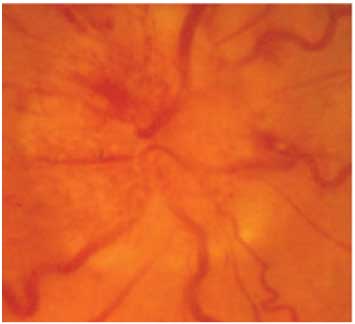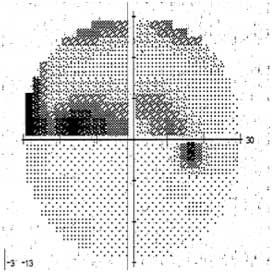Non-Arteritic Anterior Ischemic Optic Neuropathy (NAION)
The optic nerve is a cable that connects the eye to the brain and receives its blood supply through many small, fine arteries within each eye socket. Sometimes there can be poor blood flow through these arteries leading to injury of the optic nerve that causes optic nerve swelling and bleeding. Patients experience partial vision loss.
In non-arteritic anterior ischemic optic neuropathy (NAION), patients will describe sudden, painless vision loss involving the top or bottom half of their vision in one eye.
It is not known as to why there is a loss of blood flow to the optic nerve in NAION.
What is known is that patients with NAION are born with small, crowded optic discs. In addition, these episodes of poor blood flow may occur when there is a sudden drop in blood pressure.
Patients who smoke, are diabetic, have high blood pressure, or have sleep apnea may be at a higher risk for NAION. It generally occurs in individuals older than age 50.
When NAION is suspected, a complete eye examination, visual field testing, and special pictures of the optic nerve will be performed.
No additional testing, specifically MRI or CT, is usually needed. The vision loss does not progress and, in most patients, is permanent. A small number of patients can appreciate a small amount of improvement, but there will always be some permanent vision loss.
Figure 1. Swelling and blood of the optic nerve in the affected eye of a patient with NAION.
Figure 2. Visual field testing showing vision loss in the top half of the vision in the right eye in a patient with NAION.
Unfortunately, there is no proven treatment for patients with NAION. There have been some publications showing some improvement with steroids or special injections into the affected eye, but those treatments remain debatable.
There is a 15-20% chance that the same process could occur in the fellow in a 5-year span.
Although it is not proven, some specialists will recommend a daily aspirin, good control of blood pressure (neither too high nor too low), good diabetic control, and treatment for sleep apnea to help prevent the involvement of the second eye.
For more information: view PDF brochure from the North American Neuro-Ophthalmology Society (NANOS).


